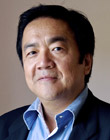From Innovations, a website published by Ziff-Davis Enterprise from mid-2006 to mid-2009. Reprinted by permission.
Tomorrow, Americans will choose between two presidential candidates who have very different ideologies. Although John McCain and Barack Obama both agree in principle on the need to improve the U.S.’s technology competitiveness, they disagree on some issues that are important to technology professionals. Here is an overview of their similarities and differences on some critical technology policy issues.
Technology education
Both candidates agree on the need to hire and train more teachers with technology skills as well as to improve the competitiveness of American students in science and technology.
McCain proposes to fully fund the Bush administration’s America Competes Act, which provides a variety of educational investments.
Obama supports doubling federal funding for basic research over ten years and promoting the National STEM Scholarship Database Act, which would create a database to coordinate information on financial aid opportunities available in science and technology
Tax policy
Here, McCain is more specific than Obama. His initiatives include:
- Make the R&D tax credit permanent
- Keep capital gains taxes low
- Allow first-year expensing of new equipment
- Oppose Internet taxation
- Oppose higher taxes on wireless service
- Lower the corporate tax rate to 25%
Obama also supports making the R&D tax credit permanent, but his tax plan is more oriented around individuals and families. He does support tax credits for small businesses and corporations that invest in jobs in the United States.
Government’s role
both candidates believe government should be a standard-bearer for effective use of information technology and each is quite specific in how they will get there.
McCain promises to create a nationwide public safety network by the end of his first term that would support first responders in emergencies. He wants to set up more Cooperative Research and Development Agreements (CRADAs), in which industry and government enter into public/private projects. He believes more government services should be available online and that the government should use videoconferencing and collaborative networks more effectively. Finally, he proposes to “ensure that Administration appointees across the government have adequate experience and understanding of science, technology and innovation.”
Obama focuses on accountability, which he says has been lacking in the Bush administration. He pledges to use “cutting-edge technologies” to create a new level of transparency and accountability for government and to appoint the nation’s first Chief Technology Officer (CTO) to coordinate infrastructure, policies and services across federal agencies. He also pledges to reinvigorate antitrust prosecution.
Obama also proposes specifically to invest $10 billion per year over the next five years to create standards-based electronic health information systems, including electronic health records. He also seeks to invest $150 billion over the next ten years to enable American engineers, scientists and entrepreneurs to advance alternative energy.
Internet
The Obama campaign has probably made better use of the Internet as a campaign tool than any previous candidate. Not surprisingly, Obama supports broad expansion of Internet access to every American. However, McCain’s objectives are similar in many ways.
McCain proposes to “encourage private investment to facilitate the build-out of infrastructure to provide high-speed Internet connectivity all over America…and allow local governments to offer such services, particularly when private industry fails to do so.” He also wants to establish a “People Connect Program” that rewards companies that offer high-speed Internet access services to low-income customers. He opposes “net neutrality” in favor of “an open marketplace with a variety of consumer choices.”
Obama proposes to provide “true broadband to every community in America through a combination of reform of the Universal Service Fund, better use of the nation’s wireless spectrum, promotion of next-generation facilities, technologies and applications, and new tax and loan incentives.” He also wants to give parents more control over information their children see on-line while vigorously enforcing laws against people who try to exploit children. He supports net neutrality.
Global trade
Both candidates want to see America become more competitive in overseas technology markets. Both support cracking down on intellectual property theft abroad.
McCain sees to expand the number of H-1B visas to enable US companies to employ more foreign workers.

 John Kao (right) believes the United States has an innovation crisis, and he’s calling on today’s corps of young technology professionals to sound the alarm.
John Kao (right) believes the United States has an innovation crisis, and he’s calling on today’s corps of young technology professionals to sound the alarm.